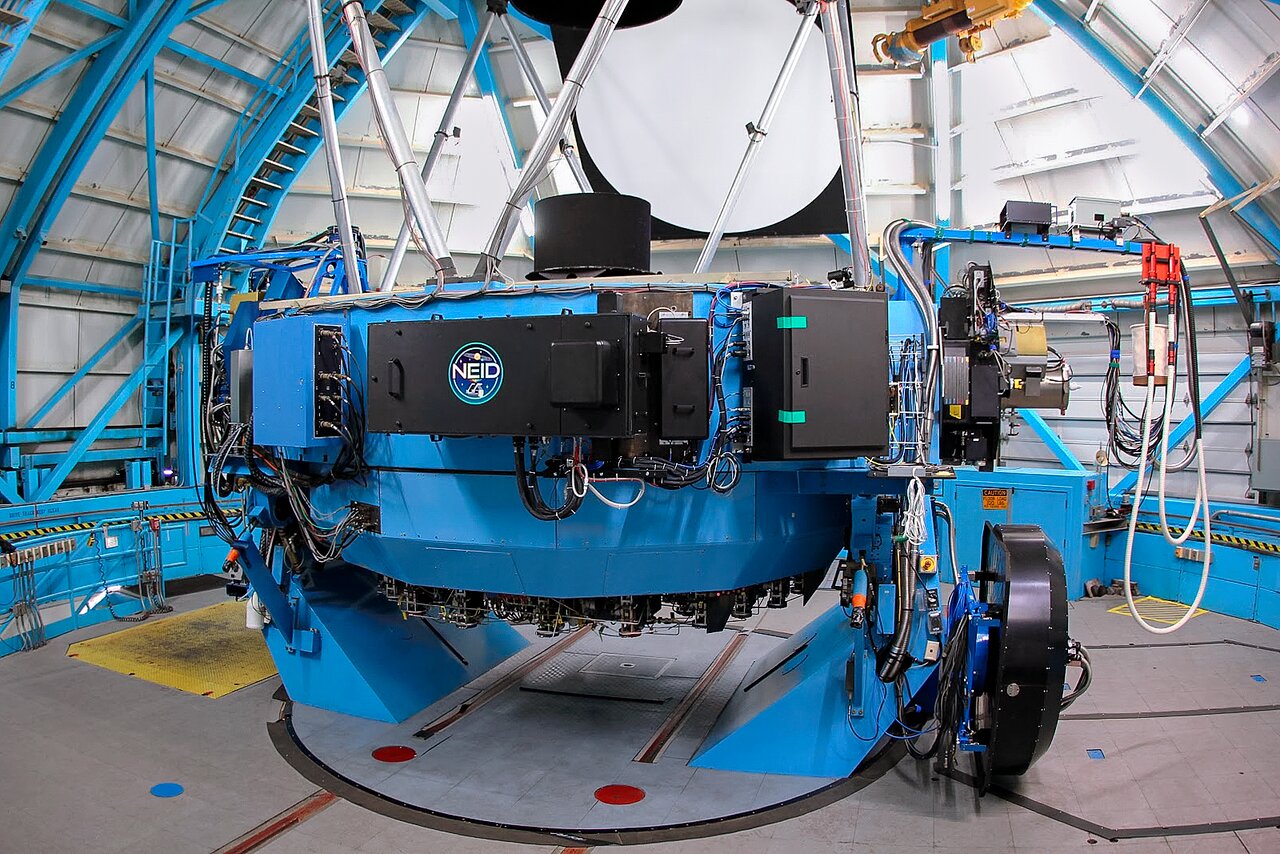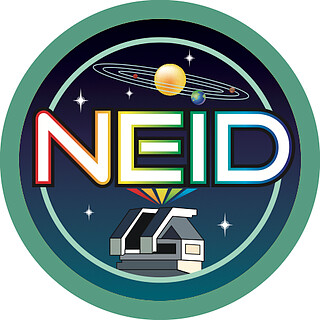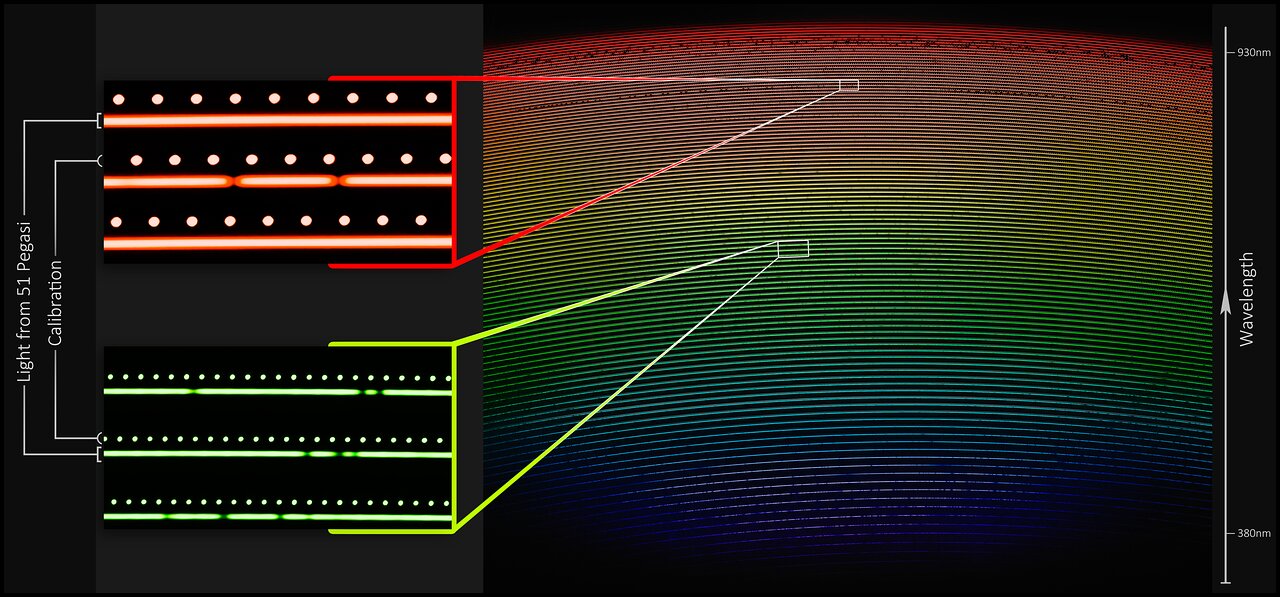NN-EXPLORE Exoplanet Investigations with Doppler Spectroscopy (NEID)
The NEID port adapter on the WIYN 3.5-meter Telescope at Kitt Peak National Observatory near Tucson, Arizona.
NEID (rhymes with fluid), an instrument funded by the NASA/NSF Exoplanet Exploration Program (NN-EXPLORE), is an extreme-precision radial-velocity spectrograph mounted on the WIYN 3.5-meter Telescope at Kitt Peak National Observatory, a Program of NSF NOIRLab, located in the Tohono O’odham Nation near Tucson, Arizona. NEID is a nested acronym for NN-EXPLORE Exoplanet Investigations with Doppler Spectroscopy, and it gets its name from the Tohono O’odham word meaning “to see”. It is designed to measure the motion of nearby stars with extreme precision using the Doppler, or radial-velocity, effect. For a one-page summary of NEID, see this handout.
NEID’s port adapter (built at the University of Wisconsin-Madison in collaboration with NOAO — now NOIRLab) is mounted on one of two bent Cassegrain ports at the telescope. It is designed to lock onto and maintain alignment with a target star. It keeps the center of the star aligned with the center of the optical cable (science fiber), which then transmits the light to the spectrograph for analysis. Other nearby fibers gather light from the sky at the same time. The fibers feed their light to a new spectrograph room built by WIYN on the ground floor of the observatory that ensures a stable environment for the spectrograph. The NEID spectrograph was built by Penn State University (Suvrath Mahadevan, PI). It is sealed in a vacuum chamber to maintain the optics at a stable temperature (with variations less than one-thousandth of a degree C) and isolated from outside disturbances. To better understand the noise produced by an exoplanet’s host star, NEID uses data from our own Sun, which can mimic the noise from the exoplanet’s host star. To collect these data, a small solar feed mounted on the roof of the building collects light from the Sun and feeds it to NEID.
The NEID spectrograph in the lab when it was being built at Penn State.
NEID can take measurements in a wide range of colors from deep blue to near-infrared, covering wavelengths from 380 to 930 nanometers. There is a choice of two science fibers for two resolution modes: a high-resolution mode for bright targets with an apparent magnitude less than approximately 12 (lower magnitude indicates that the object is brighter) and a high-efficiency mode for fainter stars or poor observing conditions. NEID performs ultra-precise wavelength calibration via multiple sources, including a laser frequency comb, a tool for precisely measuring the wavelength of light. NEID is currently measuring radial velocity speeds with unprecedented precision as low as 1 kilometer per hour (0.62 miles per hour) — a little more than the typical crawling speed of an infant — potentially uncovering Earth-mass exoplanets.
Science Highlights of NEID
First light spectrum of 51 Pegasi as captured by NEID on the WIYN telescope with blowup of a small section of the spectrum. The right panel shows the light from the star, highly dispersed by NEID, from short wavelengths (blue) to long wavelengths (red).
Credit: G. K.Stefánsson/Princeton University/Penn State/NOIRLab/NSF/KPNO/AURA
Quick Facts
|
|
NN-EXPLORE Exoplanet Investigations with Doppler Spectroscopy (NEID) The technical information for astronomical observations is available at the NOIRLab Science webpage. |
|
|
Site |
Kitt Peak National Observatory |
|
Telescope |
WIYN 3.5-meter Telescope |
|
Type |
Radial Velocity Spectrograph |
|
Wavelength range |
380–930 nm |
|
Number of detectors |
1 |
|
Detector format |
9k x 9k CCD with 10-micron pixels |
|
Detector total size |
85 Megapixels |
|
Spectral resolution |
High-Resolution Mode: R ~ 120k High-Efficiency Mode: R ~ 70k |
|
Field of view |
High-Resolution Mode: 0.92-arcsecond diameter High-Efficiency Mode: 1.5-arcsecond diameter |
|
Filters |
None |
|
Date of first light |
13 December 2019 |
|
Science goals |
High-precision Doppler observations of exoplanets around nearby stars Enable the discovery of Earth-mass planets in the so-called habitable zones of the nearest stars Provide highly precise masses and densities for transiting planets discovered by the TESS spacecraft Characterize exoplanet host stars |
|
Images taken with the instruments |
|
|
Images of the instrument |
|
|
Videos of the Instrument |
|
|
Press releases with the instrument |
|



